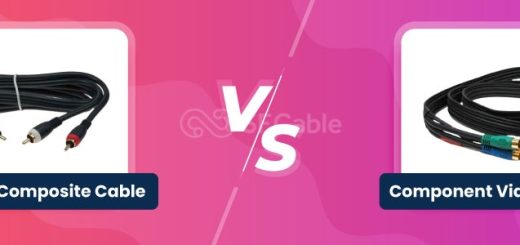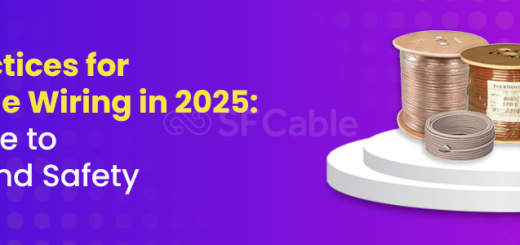Understanding Coaxial Cable Shields: The Key Differences Between Dual and Quad Shield
Introduction
When it comes to data transmission, coaxial cables are the behind-the-scenes heroes, getting the signal to where it needs to go without interruption. These cables have multiple layers, including a vital shield that guards against outside interference.
This shield is key to signal integrity and minimizing interruptions. Coaxial cables come in two main types of shield: Dual Shield and Quad Shield. The difference between them is the level of EMI protection.
Choosing the right shield can make a big difference in performance, especially in high-interference environments. In this blog, we will break down the differences between Dual Shield and Quad Shield coaxial cables so you can make the right decision for your needs.
What is Coaxial Cable Shielding?
Coaxial cable shielding is a layer that surrounds the cable’s inner conductor. Its purpose is to block electromagnetic interference (EMI) from outside sources. By blocking EMI, the shield ensures the signal is clear and undistorted.
This also helps reduce signal degradation and loss during transmission. Coaxial cable has four main components: the inner core, insulation, shield, and outer jacket. These parts work together to make the signal more durable and reliable.
Dual Shield Coaxial Cable
Dual shield coaxial cables have two layers of shielding: an inner foil shield and an outer braided shield. The inner shield is usually made of foil or aluminum, which blocks EMI.
The outer shield is a braided layer, usually made of copper or other conductive materials, that provides extra protection. This dual-shielding design is cost-effective and widely used in many applications.
It provides good protection against low to moderate EMI and stable signal transmission. Common applications include home networks, TV antennas, and general-purpose connections.
Quad Shield Coaxial Cable
Quad shield coaxial cable has four layers of shielding: two foil shields and two braided shields. The inner layers consist of two foil shields that block interference.
The outer layers consist of two braided shields that provide extra protection. This design offers better EMI and RF protection, resulting in improved signal quality with less signal loss over longer distances.
Quad shield cables are perfect for high-performance video systems, satellite dishes, and high-frequency environments.
Key Differences Between Dual and Quad Shield
| Feature | Dual Shield | Quad Shield |
|---|---|---|
| Shielding Layers | Two layers of shielding: one aluminum foil and one braided mesh | Four layers of shielding: two layers of aluminum foil and two layers of braided mesh |
| Signal Protection | Provides moderate protection against interference | Provides superior protection against interference, ideal for high-interference environments |
| Common Use | Used in residential or commercial setups with lower interference levels | Used in areas with high electromagnetic interference (EMI), such as near heavy machinery or broadcast towers |
| Flexibility | More flexible due to fewer shielding layers | Less flexible because of the additional shielding layers |
| Price | Generally less expensive | Tends to be more expensive due to extra shielding |
| Weight | Lighter compared to quad shield | Heavier due to extra shielding materials |
| Durability | Suitable for general use with moderate durability | More durable and resistant to damage from external interference |
| Applications | Home audio/video, satellite TV, and basic networking | Professional broadcasting, commercial installations, and high-performance data transmission |
| Signal Quality | Adequate signal quality for most typical uses | High signal quality, minimizes signal degradation over longer distances or in noisy environments |
Conclusion
In summary, coaxial cable shielding is the key to reliable and efficient signal transmission. Choosing between Dual Shield and Quad Shield cables depends on the level of EMI in your environment.
Dual Shield is good for most general use, providing enough protection. However, in high-EMI environments like industrial settings, Quad Shield cables offer better shielding and performance.
Choosing the right cable can reduce signal degradation and interference. By evaluating your setup needs, you can make a more informed decision. Selecting the right coaxial cable ensures long-term stable signal quality and minimal interruptions.


